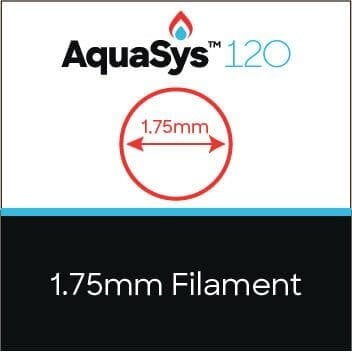![A high-temperature soluble support material [Source: AquaSys]](https://fabbaloo.com/wp-content/uploads/2020/05/image-asset_img_5eb08dfd908ad.jpg) A high-temperature soluble support material [Source: AquaSys]
A high-temperature soluble support material [Source: AquaSys]
It seems there is at least one other high temperature soluble support material available.
Earlier we wrote about 3DGENCE’s announcement of a specialized high-temperature soluble support material for PEKK — an astute reader has identified another source.
3DGENCE ESM-10 Soluble Support Material
The 3DGENCE material was (and is) quite important as it opens up the possibility of 3D printing massively complex and delicate structures in the highly desirable PEKK engineering material.
Previously only straightforward shapes with easy-to-remove support material were possible. It seems that 3DGENCE’s new ESM-10 soluble support material is the only one with capability for PEKK material, at least so far.
It’s a unique solution because most of the soluble support filaments you see for 3D printers are relatively low temperature. If you attempted to 3D print them with high-temperature engineering materials like PEKK or PEEK, they would simply melt and not provide a great deal of support. In fact, they would cause a bit of a mess in the build chamber.
But what about other high-temperature 3D print materials? Are there soluble support options for them?
High-Temperature Soluble Support Options
It turns out, yes, there are, according to Fabbaloo reader Benjamin Lakeit, who writes:
“I found another interesting soluble support material for high print environment temperatures — the AquaSys120 material from Infinite Material Solutions.
Unfortunately the material seems to be not compatible with PEEK (at least it was not successfully tested) but is compatible with many other materials where ESM10 is not compatible at least according to 3DGENCE publications (e.g. PC, PP, TPU, PA 6.6, PLA, PETG). Additionally no special chemicals are required for the solution process, which is different to the ESM10 material which requires a special solution agent which adds more cost.”
High-Temperature Soluble Support Price
While the two materials, ESM-10 and AquaSys 120 are not functionally compatible, they do carry different costs.
A one kg spool of AquaSys 120 is priced at US$180, whereas the ESM-10 is €88 for 500g, or about US$196/kg. These costs are relatively comparable, but the ESM-10 requires use of a proprietary solvent, which is priced at €6 (US$7) per 180ml. It’s not clear how much solvent is required for a print, as it would depend on the size of the print, the amount of material to dissolve, and how long the solvent can be reused.
Meanwhile, the AquaSys 120 material is soluble in plain water, so no need for additional solvents.
More than likely a high-temperature 3D print workshop might use both support materials for high-temperature engineering prints (assuming use of a 3DGENCE F340 device for the ESM-10).
Complex 3D Print Material Futures
All this means to me that the market is responding to the increasingly complex needs of 3D printing.
While years ago the only filament you could find would be some crappy “ABS welding wire”, today you can find literally hundreds of highly specialized materials for all kinds of applications.
And we’ll see many more in the future.

